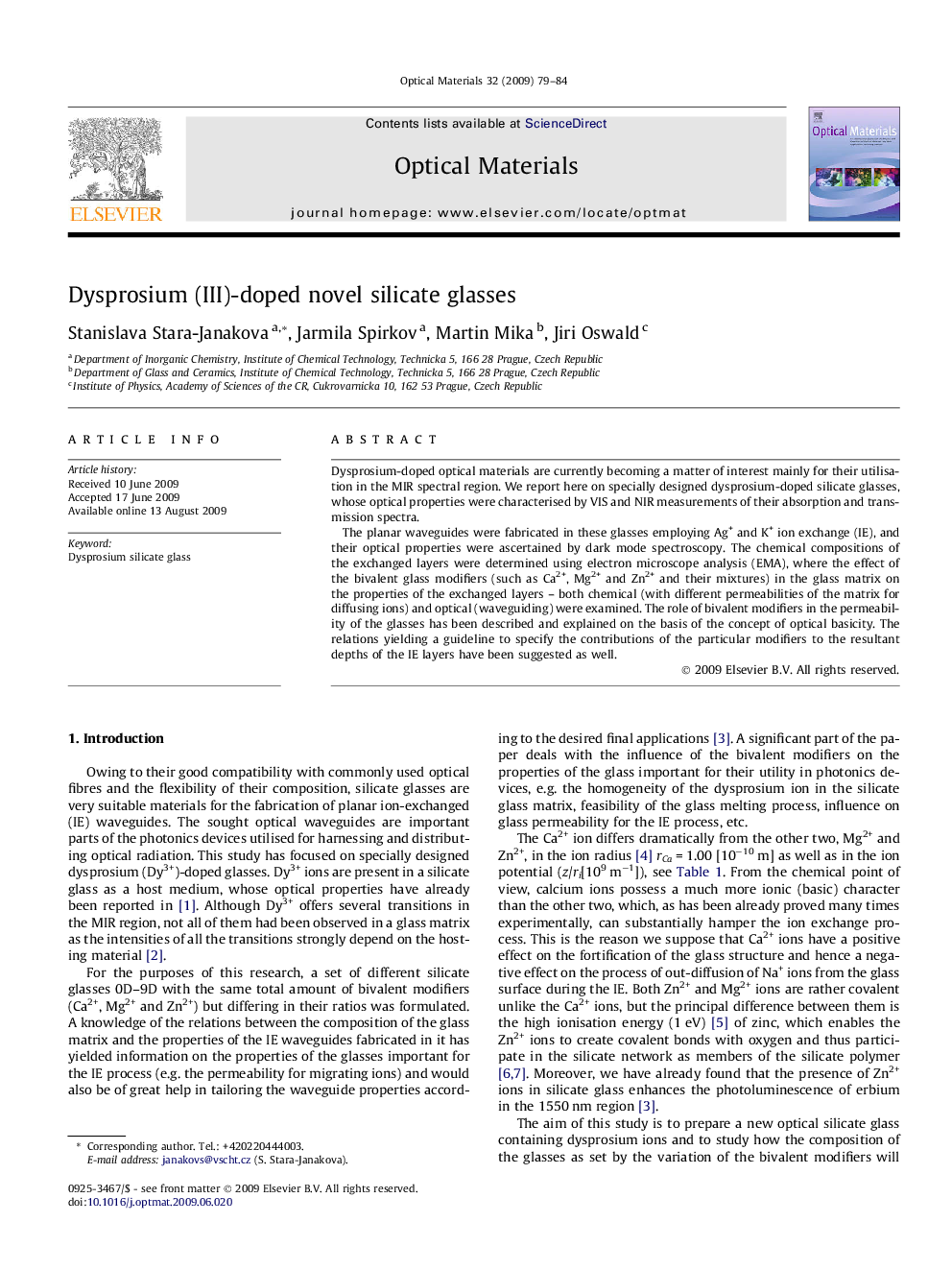| Article ID | Journal | Published Year | Pages | File Type |
|---|---|---|---|---|
| 1496105 | Optical Materials | 2009 | 6 Pages |
Dysprosium-doped optical materials are currently becoming a matter of interest mainly for their utilisation in the MIR spectral region. We report here on specially designed dysprosium-doped silicate glasses, whose optical properties were characterised by VIS and NIR measurements of their absorption and transmission spectra.The planar waveguides were fabricated in these glasses employing Ag+ and K+ ion exchange (IE), and their optical properties were ascertained by dark mode spectroscopy. The chemical compositions of the exchanged layers were determined using electron microscope analysis (EMA), where the effect of the bivalent glass modifiers (such as Ca2+, Mg2+ and Zn2+ and their mixtures) in the glass matrix on the properties of the exchanged layers – both chemical (with different permeabilities of the matrix for diffusing ions) and optical (waveguiding) were examined. The role of bivalent modifiers in the permeability of the glasses has been described and explained on the basis of the concept of optical basicity. The relations yielding a guideline to specify the contributions of the particular modifiers to the resultant depths of the IE layers have been suggested as well.
